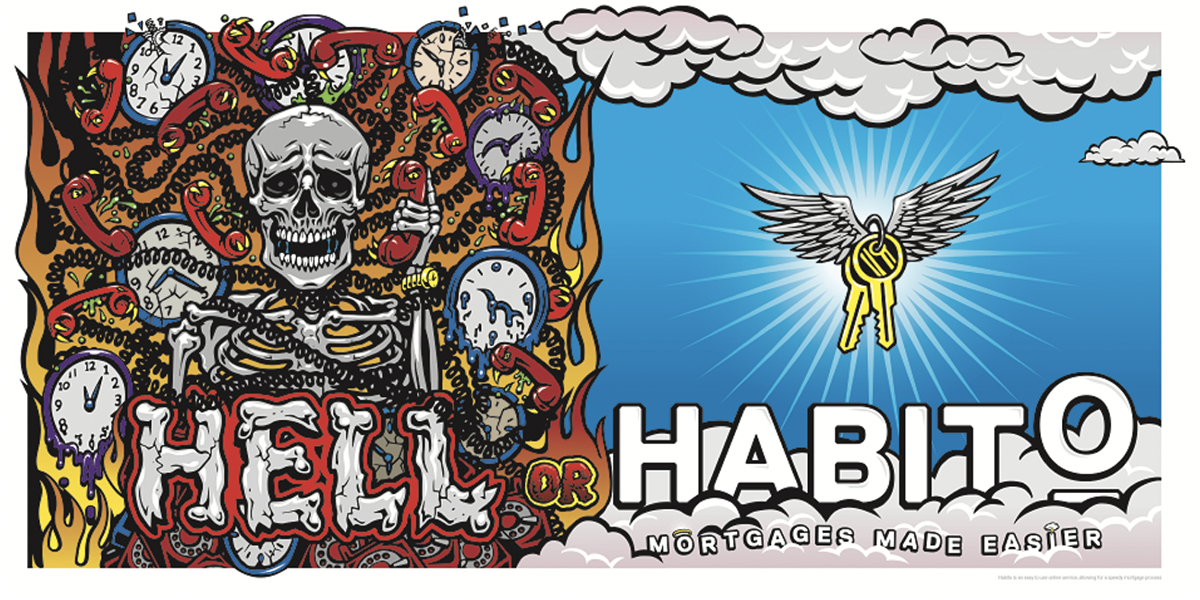
Despite the Hindenburg of economic uncertainty floating overhead, financial services is on the up: a CAGR of 8.8% globally; £1.3tn in total investment assets in the UK – equivalent to a bewildering 58% of GDP.
But regardless of this buoyancy, the sector continues to struggle with a particular set of marketing-based problems, ones that are holding many businesses back from realizing their potential.
The most obvious is one of reputation; this is an industry with more burned fingers than an A&E department on Bonfire Night – a whopping 57% of people in the UK say they don’t trust financial advisors. Then there’s the rate of change in product technology. Any highly regulated industry’s relationship with innovation is complicated, but with the adoption curve shifting in fintech’s direction, and DeFi set to defile the norm, this is disruption with a capital D.
Competition-wise, with circa 15,000 financial advisor firms in operation, and only 600,000 HNWI to go around, it’s a bear fight out there.
Despite this, there’s a woeful lack of heterogeneity out there. Pick any sub-category and what you’ll see is businesses describing themselves as if they aren’t one of hundreds of Stepford-Wivesian solutions, offering up uncannily similar services, described with uncannily similar words, and illustrated by uncannily similar images.

And then there’s the recruitment gap. Whereas a pinstripe suit, a Maxwell Scott briefcase, and a £100-a-day coke habit was once seen as a marker of success, leading Business School MBAers are now far more likely to favor Silicon Valley over the silicon on show in the joints bankers used to frequent.
The most dangerous outcome of this sameness? Work goes to the lowest bidder, and an entire industry tail-spinning into commoditization and decimated growth.
The trouble is, with tech taking the talent, innovation also falters, creating a self-perpetuating flywheel of f***ery that makes sustainable growth even harder to achieve.
So what’s the answer?…. BRAND.
Of course it is, you may scoff, we are a brand consultancy after all, and the ‘law of the instrument’ and all that … But we’re not talking that definition of brand, the one where you glitter up your visual identity and Instagram the bejesus out of it. The significance of the kerning on the logotype has its place, but any business fiddling with that stuff whilst profits burn needs to break the glass on the ‘we’re about to disappear up our own bottoms’ alarm.
Instead we’re talking about the definition of brand that acts in service of the business to unlock future EBIT, an asset on the balance sheet capable of delivering growth disproportionate to BAU.
Somewhere along the line we conflated marketing with ‘comms’, and forgot that brand strategy done proper (segmentation, targeting, positioning, the 4Ps) is a woefully undervalued lever in generating market value.
Solving the challenges outlined above requires dealing in something exceptional. Pretty pictures, platitudes and cliches do not a punchy profit make. Ambitious businesses need brand propositions that destabilize the order of the market, reposition competitors, and put things on an unequal footing.
It means, as marketing speaker Samuel Scott suggests, offering the product for sale ‘plus’ something. Evian is water ‘plus’ youthfulness. American Express is credit ‘plus’ prestige.
If you’re unable to clearly articulate your difference, your audience sure as hell won’t bother doing the hard yards for you. So what are the options for arriving at your ‘plus’?
It might be via a product that is materially different with a genuine USP: e.g. Habito’s fully-online mortgage brokering service, and subsequent Habito One mortgage product launch.

It might be by positioning against a previously unaddressed enemy within a category: e.g. Monzo’s straight-talking, transparent, empowerment platform, versus the confusion and obfuscation peddled by the big banks. Or it might be to find a completely different way of framing that which others are saying: e.g. Compare the Market’s ‘meerkat’ reinvented the language and way comparison sites spoke to customers.
The point is to specifically answer the question of ‘why you?’, in a way that makes you stand out like a cigarette butt in a bowl of organic granola.
A strong brand proposition doesn’t just allow you to attract more customers or potential recruits, it increases what your services are worth. As a brand acquires meaning and value for its audience, the more they will pay for it, a multiplier that drives long-term equity for the business.
Brand also works internally, acting as a guiding principle for all stakeholders, a set of bindings that reduce wriggle room, establish tighter tolerances and keep everyone tethered to a common purpose. Any confusion at brand proposition level tends to waterfall through the business, eroding competitiveness and compromising value, but brand is the ‘business bostick’ that holds it all together, a guiding light by which all decisions can be made.
Should you consider revisiting your brand proposition?
If by now you’re wondering if you might disproportionately benefit from revisiting your brand and business proposition, here are five questions to ask yourself.
- How meaningfully different are you really?
Take a look at the ‘About’ pages on a handful of your direct competitors’ websites. Beyond a few judicious word choices, are you saying anything meaningfully different? Put yourself in your audience’s shoes. People are busy. Their brains are lazy. Are you making it easy for them to choose you (or decide you might not be the right fit for them), or are they having to employ the services of a forensic detective to work out the differences between you all?
- How single-minded are you being?
Are you layering? Often the most obvious sign that something is amiss is when you need several commas and a boat load of ‘ands’ to describe what it is that you do. Trying to be all things to all men isn’t a competitive mindset – it’s a cop out. Strategy is sacrifice. A strong brand means conveying your ‘one thing’ not ‘some things’.
- Are all your stakeholders on the same page?
Walk into any department in any part of your company and ask someone what they understand the vision for the company to be. Is it a set of actionable principles that gives them a clear steer on how they should be executing on their duties in order to contribute to a customer’s overall experience? Or is it a set of pointless wank-words that are about as strategic as a game of Twister.
- How often are discussions coming down to price?
Fees in line with the market, but still struggling to justify them? You’ve already slipped to the shitty end of the brand-commodity continuum. As Warren Buffet maintains, the single most important decision in evaluating a business is its price elasticity. If you’re sacrificing a goat every time you so much as think of increasing prices, chances are you’ve got a terrible business, a terrible brand, or both.
- Are you getting diminishing returns on your performance marketing?
If it’s costing you more and more to achieve the same results with your activation budget, or it’s not scaling how you anticipated, it’s usually an indication that you’ve captured all the low hanging fruit, but forgot to feed the tree to keep it flowering stronger and longer. Building a brand runs counter to this scorched earth policy and keeps the cash flow reservoir topped up long-term.
How did you do?
Don’t panic if the answers throw up some uncomfortable truths. Conspicuous brand propositions are hard to come by. Their development requires discipline and servitude to the rigor of strategic marketing; the slavish execution of research, segmentation, targeting and positioning to validate or course correct the very foundations on which your business has been built.
But the rewards are most definitely worth it. By aligning your brand strategy with your business strategy, you can transform your organization and its operating profits. Think of it like a shot of Viagra to the corporate bloodstream – it builds and sustains performance across the board.
Cover image source: JohanSwanepoel